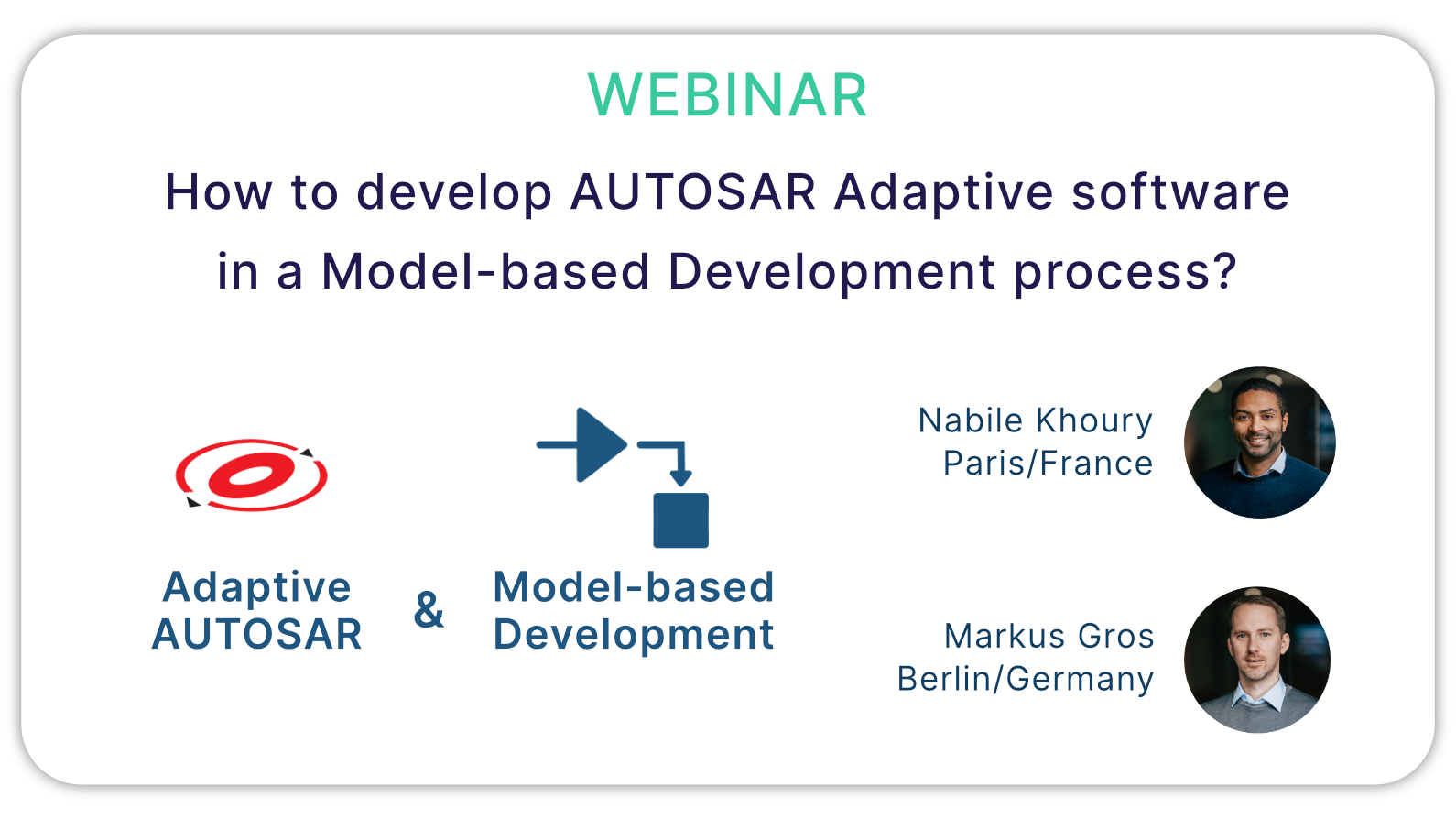
May 17th, 09:00 CET (Berlin) / 03:00 EST (Detroit) / 12:30 IST (Bangalore) / 15:00 CST (Beijing)
May 17th, 15:00 CET (Berlin) / 09:00 EST (Detroit) / 18:30 IST (Bangalore) / 21:00 CST (Beijing)
In 2017, the AUTOSAR consortium has introduced a new architecture standard to support the software development for automated driving. Without replacing the well-established AUTOSAR Classic, the new standard AUTOSAR Adaptive relies on a service-oriented architecture to implement high-performance demanding software and to dynamically connect service provider and client consumer applications during runtime.
The new standard keeps the same goal to facilitate the management of the software architectures, to make software components independent from the hardware and to ease the collaboration between companies but uses different interface types compared to Classic to establish the communication between software components. To implement the application functions, projects rely again on the abstraction offered by Model-based Development to design the functions and automatically generate the code that uses the appropriate Adaptive Platform APIs.
In this free webinar Markus and Nabile will:
- Explain the main differences between Classic and Adaptive AUTOSAR for Application software development
- Describe the new concepts and terminology of AUTOSAR Adaptive
- Present an example of developing and testing an Application software component using Model-based.


